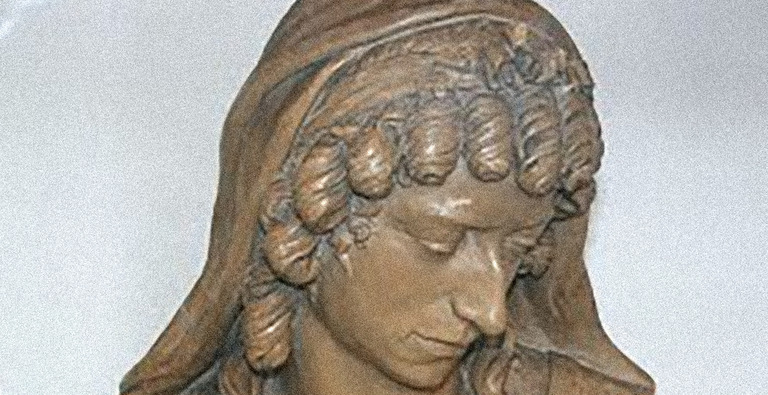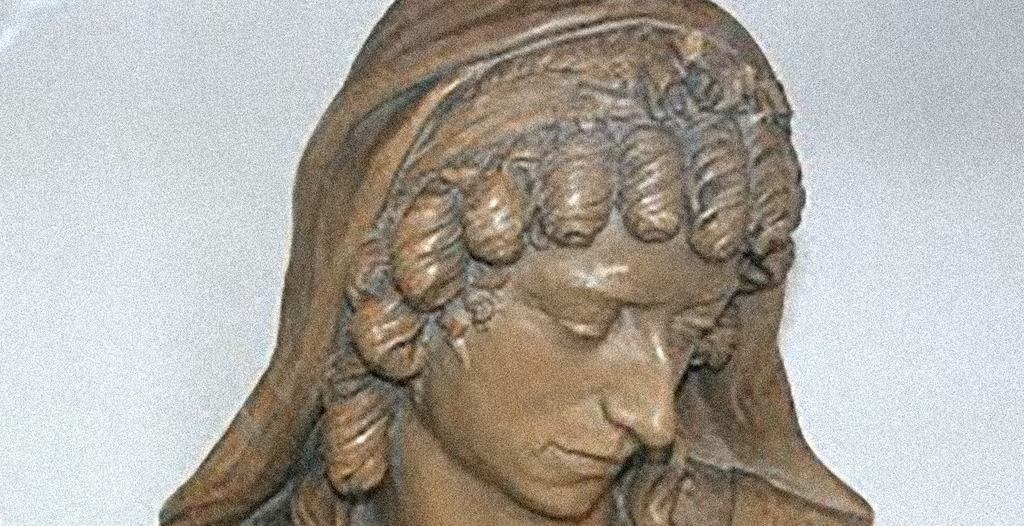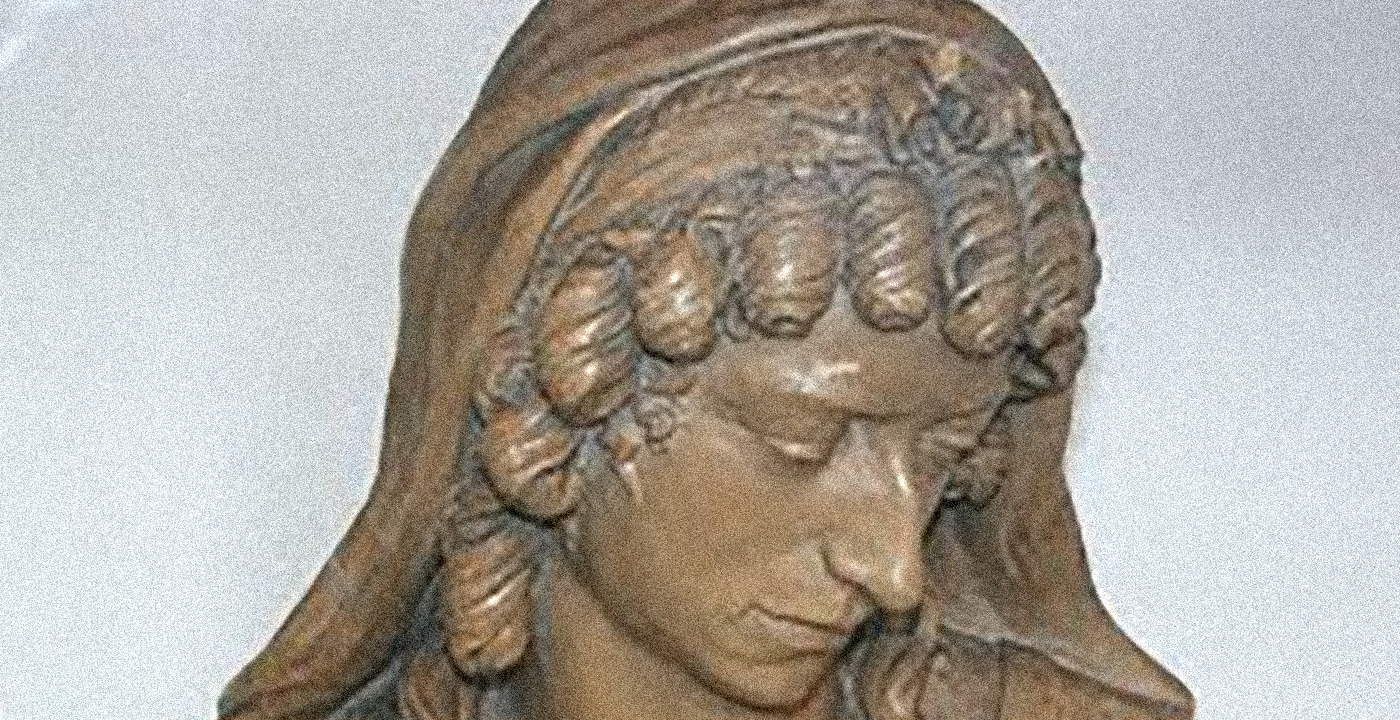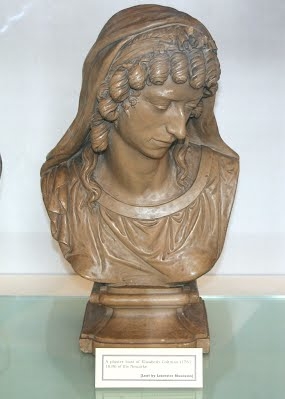Birth
June 22nd, 1761 in Leicester, UKEducation
Dissenting boarding school at Hackney,
Death
1832
burial on 03/09/1838
Religion
Great Meeting in Leicester, PresbyterianElizabeth Coltman was a poet and writer whose work is often conflated with Elizabeth Coltman Heyrick, though her individual contributions are now being recovered.
Coltman was steeped in the culture of dissent as well as literature, education, religion, and politics. She published Plain Tales at the forefront of the children’s literature movement and Jenny Hickling at the beginning of the religious tract movement, two literary movements readily appropriated by evangelical and dissenting women writers to reach massive audiences in England and around the world. Coltman’s coteries of family and friends in Leicester, London, and the West Country were not only poets and novelists but educators and social activists actively involved with women’s education, marriage equality, and the abolitionist movement in England and America in the latter part of the 18th and the first half of the 19th century.
Personal Information
Name(s)
Elizabeth Coltman
Date and place of birth
Leicester, England, 22 June 1761
Death and place of death
Leicester, England, [burial on 9 March] 1838
Family
Mother: Bridget Litherland (1716-1802)
Father: John Coltman (c. 1715-1800), a wealthy hosier who moved into a three-story house in the Newarke, Leicester, in 1752, the year of his marriage.
Siblings:
Anne Coltman (1753–88) married Edward Cooper (1754–1818) in 1777, a union that produced five children, all of whom died from consumption at young ages: Mary Anne (1779–1804), George (1780–1818), John (1784–1811), Elizabeth (1785–1805), and Edward (1788–1808). George Cooper lived long enough to marry Margaret Billson (1795–1867), who bore him four daughters before his death in 1818. The girls were first taught by Elizabeth Coltman and then in the mid-1820s sent to a boarding school in Coventry run by Mary and Rebecca Franklin, daughters of the local Baptist minister and whose most famous student was Mary Anne Evans (the future novelist George Eliot).
Mary Coltman (1757–1834) married John Grew of Birmingham c. 1780. A few years later they immigrated to America, settling first in Boston and eventually in Philadelphia, worshiping among the Baptists and Congregationalists. Her son, Henry Grew (1781-1862), became a prominent American theologian and writer and in 1840 travelled to London with his daughter Mary Grew (d. 1896) to attend the inaugural World Anti-Slavery Convention. They spent three weeks in Leicester at the Coltman home in the Newarke, just two years after Elizabeth Coltman’s death. Mary Green, another granddaughter of Mary Coltman Grew, married Wendell Phillips (1811–84), one of the leading abolitionists in pre-Civil War America.
Marriage and Family Life
Elizabeth Coltman was engaged briefly in the mid-1780s to John Audley of Cambridge, but she broke off the engagement and remained single thereafter, caring for her father and mother and, after their deaths, her nephews, nieces, and grandnieces.
Education
Elizabeth Coltman and her sisters were educated at a Dissenting boarding school at Hackney, possibly the school attended by Mary Steele (1753-1813). Mary Scott also came to know Steele and Coltman at this time, an indication she too may have attended a London boarding school in the 1760s.
Religion
Elizabeth Coltman was raised in the Great Meeting in Leicester, a mixed congregation of Presbyterian and Independent (Congregational) members, some of whom where orthodox and some who, by the 1780s, had become Arians and Socinians. The congregation was led by Hugh Worthington, Sr., whose son, Hugh Worthington, Jr., an Arian, became Mary Hays’s pastor at Salter’s Hall in London in 1792. The Coltmans maintained their orthodoxy as members and in 1807, as the congregation moved further towards Unitarianism, Elizabeth Coltman left the Great Meeting and joined the Particular Baptist (Calvinist) congregation in Harvey Lane upon the arrival of Robert Hall, an old friend of Mary Steele of Broughton.
Transformation(s)
Surrounded by sufficient wealth, Coltman participated in a vibrant social and intellectual circle of likeminded Dissenting women in Leicester (including Elizabeth Coltman Heyrick) and the West Country (Mary Steele and Mary Scott, among others), as evidenced by her many visits to the West Country, her friendship poems with Mary Steele, and her Romantic travel narrative from the Lake District (published in 1800). After 1800, she became more deeply religious and less overtly Romantic in her writing, devoting herself to educating her orphaned grandnieces, composing educational works and conduct books for young readers, and promoting the abolitionist movement.
Contemporaneous Network(s)
Between 1780 and 1815, Elizabeth Coltman moved primarily in three circles composed almost exclusively of Dissenting women and men. The first was the Steele Circle, led by the poets Mary Steele (1753-1813) of Broughton and Mary Scott (1752-93) of Milborne Port, the diarist Jane Attwater Blatch (1753-1843) of Bodenham, and the poet Maria Grace Saffery (1772-1858) of Salisbury. By the early 1790s, Coltman was moving in her own literary circle in Leicester, one that included the publisher James Phillips (1767-1840) and at least five women writers: Catherine Hutton (1756-1846), Susanna Watts (1768-1842), Elizabeth Benger (1775-1827), Elizabeth Coltman Heyrick (1769-1831), and Jane Adams Houseman (1768-1837)) of Lancaster (great-grandmother of the poet-professor A. E. Housman). Two other members – Mary Ann Coltman (1778-1871) (Elizabeth Heyrick’s younger sister) and Mary Reid (1769-1839) – remained unmarried and never developed reputations as writers but were integral to the circle in other ways. Heyrick and her sister were close friends and neighbors (they also worshiped at the Great Meeting prior to Heyrick becoming a Quaker) but were not related to Elizabeth Coltman. Mary Steele was introduced to this circle during her visits to Leicester in 1788, 1792, and 1794. By the late 1790s, several members of Coltman’s circle then living in London, primarily Mary Reid and her brother John, and Elizabeth Benger, were joined by some of Steele’s old West Country friends, Thomas Mullett (1745-1814), his daughter Jane Mullett Tobin (1782-1837), and their new friends, Henry Crabb Robinson (1775-1867), Mary Hays, and Eliza Fenwick.
less
Significance
Works/Agency
Plain Tales, Chiefly Intended for the use of Charity Schools. London: Vernor and Hood, 1799.
“Journal, written during a Hasty Ramble to the Lakes.” Monthly Magazine 10 (August and September, 1800), 11–16, 119–23.
“Memoir, Mrs. John Coltman.” Monthly Magazine 14 (November 1802), 363–64.
Plain Tales; or the Advantages of Industry over Idleness. 2nd ed. London: J. Harris, 1804, 1807.
Plain Tales; or, The Advantages of Industry. By E**** C******. Author of “Instructive Hints” &c. . . . To which is added, The Happy School-Girl. 3rd ed. London: Darton & Harvey, 1806.
The Warning. Recommended to the Serious Attention of all Christians, and Lovers of their Country. London: Darton and Harvey [c. 1805]. Reprint. Philadelphia: Kimber, Conrad, and Co., 1807.
Instructive Hints in Easy Lessons for Children. London: Darton and Harvey, 1806. Reprint. Philadelphia, 1808; Utica, NY: Seward and Williams, 1810.
Familiar Letters Addressed to Children and Young Persons of the Middle Ranks. London: Darton and Harvey, 1811.
The History of Jenny Hickling; a Living Character. London: Tilling and Hughes, undated [c. 1815].
The History of Jenny Hickling: An Authentic Narrative. London: Religious Tract Society; New York: The American Tract Society, undated [c. 1822].
The Schoolmistress; or, The True History of Jenny Hickling; who was Bedridden from the time she was Thirteen Years old; and an account of the manner in which she taught her Scholars. London: Printed by Augustus Applegath and Edward Cowper for the Religious Tract Society, undated [after 1822].
Contemporary Identifications
References to Coltman can be found in Catherine Hutton Beale’s Catherine Hutton and her Friends (Birmingham, 1895) and her companion volume, Reminiscences of a Gentlewoman of the Last Century: Letters of Catherine Hutton. (Birmingham, 1891). William Gardiner, the Leicester socialite and music historian, noted that on a visit to Paris in 1802, “Miss Coltman, the literary lady” was still an alluring beauty and “the subject of enquiry when certain Leicester men met in the Louvre” (1.247). Coltman’s identity as an author was preserved in an informal annotation by Robert Edminson, Baptist minister at Bratton from 1810 to 1825, affixed to a copy of The Warning originally belonging to Jane Attwater Blatch (Angus Library, Oxford, shelfmark 35.d.22.[d.]). His note, dated 27 March 1812, verifies Coltman’s authorship of her four prose works prior to Jenny Hickling.
Reputation
Though she published for the most part anonymously (some appeared with her initials), Coltman’s writings were well known among her friends in all three circles, from Plain Tales to Jenny Hickling, the latter one of the most widely distributed works by the Religious Tract Society in the 19th century. Unfortunately, this “inside” knowledge of her publications was insufficient to provide a lasting legacy of her authorship to the larger world of 19th and 20th century readers. Accordinglly, she disappeared from bibliographic records by the early 20th century, her life and writings having been conflated into those of her life-long friend of the same name, the abolitionist Elizabeth Coltman Heyrick (1769-1831).
Legacy and Influence
The life of Elizabeth Coltman has finally been recovered and separated from that of Elizabeth Coltman Heyrick. Coltman was steeped in the culture of dissent as well as literature, education, religion, and politics. She published Plain Tales at the forefront of the children’s literature movement and Jenny Hickling at the beginning of the religious tract movement, two literary movements readily appropriated by evangelical and dissenting women writers to reach massive audiences in England and around the world. Coltman’s coteries of family and friends in Leicester, London, and the West Country were not only poets and novelists but educators and social activists actively involved with women’s education, marriage equality, and the abolitionist movement in England and America in the latter part of the 18th and the first half of the 19th century.
less
Controversies
Controversy
She was not controversial in her lifetime, though she was a political radical in the 1790s and for some time thereafter. Her flirtation with a young Samuel Coltman during her visit to the Lake District in 1796 may have momentarily damaged her relationship with his mother and his siblings, one of whom being Elizabeth Heyrick. Her work with Heyrick and Mary Coltman and others in the founding of the Leicester Abolition Society in the mid-1820s may have offended some who thought such activities not suitable to women. Her controversial political pamphlet, The Warning, voiced unflinching disagreement with the Napoleonic Wars. Until recently, however, the primary controversy surrounding Coltman is her absence from the historical record due to the conflation of her life and writings with that of Elizabeth Heyrick.
New and unfolding information and/or interpretations
The most significant new information concerning Coltman has arisen from the first accurate separation of her life and writings from that of her friend, Elizabeth Heyrick; new information on her role within the Steele circle of Broughton; the recovery of her surviving poems and letters preserved in the Steele Collection at the Angus Library, Oxford, and the Leicestershire Record Office; and the discovery of her bust (sculpted by Eleanor Coade) at the Leicester Museum.
IV Clusters & Search Terms
Current Identification(s)
Children’s Literature, Travel Writing, Romantic Poetry, Political Controversy, Religious Dissent, Calvinism
Clusters
Steele Circle: Mary Steele, Mary Scott, Jane Attwater, Maria Grace Saffery
Leicester Circle: Mary Reid, Mary Coltman, Elizabeth Coltman Heyrick, Susanna Watts, Catherine Hutton, Elizabeth Benger
London Circle: Mary Hays, Thomas Mullett, Jane Mullett Tobin, Eliza Fenwick, Crabb Robinson
Search Terms
Elizabeth Coltman Heyrick, Leicester Literary Women, Steele Circle, Women Travel Writers, Lake District, Religious Dissent, Children’s Literature, Women’s Education, Conduct Literature
References in existing schemas
Mary Steele, Mary Scott
less
Bibliography
Primary (selected):
Gardiner, William. Music and Friends, 3 vols (London: Longman, 1838-53).
Beale, Catherine Hutton. Catherine Hutton and her Friends (Birmingham: Cornish Bros., 1895).
---. Reminiscences of a Gentlewoman of the Last Century: Letters of Catherine Hutton (Birmingham: Cornish Bros., 1891).
Skillington, Florence E. “The Coltmans of the Newarke at Leicester.” Transactions of the Leicestershire Archaeological Society 18 (1934-35): 3-40.
Reeves, Majorie. Pursuing the Muses: Female Education and Nonconformist Culture 1700-1900 (London: Leicester UP, 1997).
Whelan, Timothy, ed., Nonconformist Women Writers, 1720-1840, 8 volumes (London: Pickering & Chatto, 2011) (Coltman’s published and unpublished poetry, prose works, and letters can be found in volumes 4 and 7).
Whelan, Timothy. “Informal Writings and Literary History: The Case of a Provincial Women’s Literary Circle, 1799-1814.” Informal Romanticism, ed. James Vigus, vol. 11. Studien zur Englischen Romantik (Trier, Germany: Wissenschaftlicher Verlag Trier, 2012), 173-88.
---. Other British Voices: Women, Poetry, and Religion, 1766-1840 (New York: Palgrave Macmillan, 2015), 155-234.
---. “Mary Steele, Mary Hays and the Convergence of Women’s Literary Circles in the 1790s.” Journal for Eighteenth-Century Studies 38.4 (2015), 511-24.
Archival resources (selected):
Four letters by Coltman to Anne Steele Tomkins, half-sister of Mary Steele, have survived within the Steele Collection, Angus Library, Oxford. Other materials can be found in the Record Office for Leicester, Leicestershire, and Rutland (ROLLR), 53’1851/1–2), 15D57/395, and DE1982/427/1–18, and in the Coltman Family Papers (Coltman MSS, 15D57) (this is the family of Elizabeth Coltman Heyrick). Her 1828 poem, “The Refuge,” resides in the Susanna Watts Scrapbook (ROLLR, DE8170). A manuscript volume of maxims and commonplaces written by Coltman and preserved by her great nieces was recently added to the Osborn Collection (acc. no. 2016-osb-0037), Beinecke Library, Yale University.
Web resources (selected):
“Coltman, Elizabeth (1761-1838),” Nonconformist Women Writers, 1650-1850. https://sites.google.com/view/nonconformist-women-writers/nonconformist-women-writers-1650-1850
Issues with the sources
Coltman’s identity was noted accurately on most of her publications throughout the 19th century and kept separate from the works of Elizabeth Coltman Heyrick, but later scholars and librarians lost those distinctions and began attributing all of Coltman’s prose writings except Jenny Hickling (which was still unidentified by archivists and librarians) to Heyrick. The similarities in their names and location, coupled with Coltman’s relative anonymity and the fame accorded Heyrick as an abolitionist writer in the 1820s, contributed to this unfortunate conflation. By the mid-twentieth century, archivists and historians were convinced that “E**** C******” stood for “Elizabeth Coltman, later Heyrick,” and not the real Elizabeth Coltman. Coltman’s career demonstrates the difficulties historians face in determining an accurate canon for women writers of the late eighteenth and early nineteenth centuries, difficulties derived from the paucity and delicacy of primary sources, both formal and informal, as well as the proliferation of incorrect biographical and bibliographical information.




Comment
Your message was sent successfully